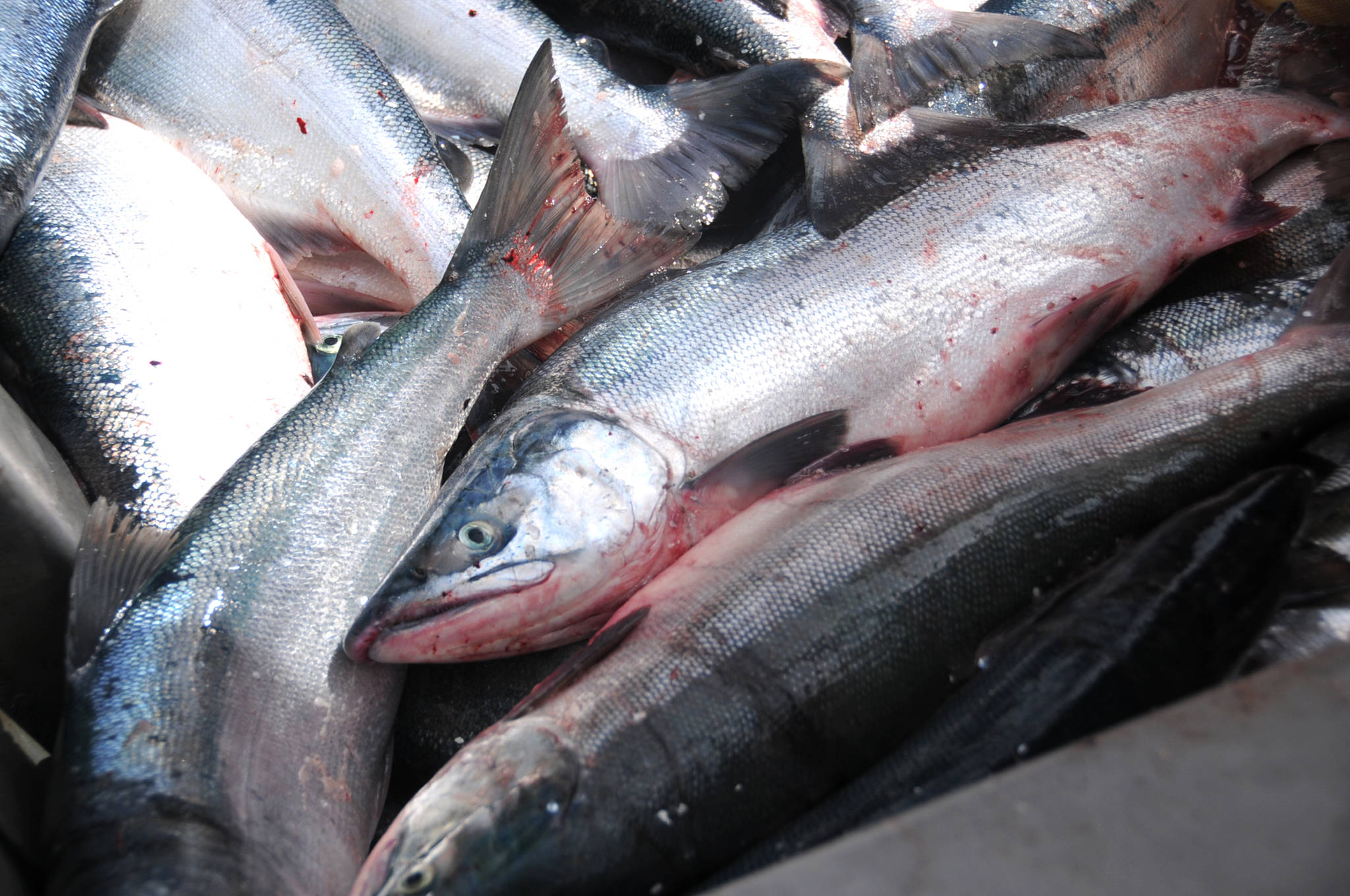With the loss of state funding, the Alaska Department of Fish and Game is back to running a cost-recovery harvest on sockeye salmon to fund an important fishery research project.
Since 1979, Fish and Game has operated a test fishery throughout July in the waters off Anchor Point to gather data about the sockeye returning to Cook Inlet’s stream systems. Crew members on a charter vessel traveling between six fixed stations gather data about the number of salmon passing, as well as fish distribution over time and space with genetic data. Since 2011, the fishery has been funded by the Legislature with state funds.
However, as the Legislature tussles over how to fill the multi-billion dollar gap in the state’s budget, every state department has experienced cuts. Fish and Game has lost several research projects, and this year, there is no funding for the Anchor Point Test Fishery, said Pat Shields, the area management biologist for the Division of Commercial Fisheries in Soldotna.
The Division of Commercial Fisheries operates the boat and uses the information to adjust sockeye salmon forecasts and make management decisions about commercial fishing time and area as well as sharing the information with the Division of Sportfish and the public. It has become increasingly important in management and, rather than shut it down for lack of funds, the department managers opted to use a cost-recovery harvest to pay for it, Shields said.
“It’s not the department’s wishes to have to do this,” he said. “We’re kind of forced into this situation, where we prioritize the project that we’re funding versus the conflict or the negativity associated with the fishery. And in this case, the offshore test project is such an important part of the management of our fisheries that we feel (it’s merited).”
Prior to 2010, that was how Fish and Game funded the test fishery every year. However, increasing conflicts with sportfishermen and personal-use dipnetters led to an outcry that the commercial fisheries division were fishing for early-run sockeye salmon headed for the Russian River, one of the most popular sportfisheries in the state. The conflict led to Fish and Game shutting down the cost-recovery harvest early in 2010, as reported by the Clarion.
To conduct a cost-recovery harvest, Fish and Game puts out a request for quotes from seafood processors, and the winning processor — Pacific Star, in this case — works with Fish and Game to run a limited commercial fishery in a specific area to fill the amount requested. This year, the fishery is set to take place between the Ninilchik and Kasilof rivers, Shields said.
“We’re going to start on June 15, and the earlier in June that you can fish, the more valuable the fish are,” he said. “We got a good price from that processor, and earlier fish means you get paid more.”
In this case, Fish and Game is looking for about $50,000–$75,000 to fund the test fishery, Shields said. He estimated that meeting the amount would require between 4,500–5,500 sockeye.
Six shore-based set gillnet fishermen will be fishing, with about 50 total nets in the water. That’s a fraction of the approximately 250 permit holders in the section and the potential for 750 allowed nets during a regular opening in the Kasilof section, Shields said. The opening date, June 15, is also the first date for the sockeye sonar project on the Kasilof River and the opening date for the personal-use gillnet fishery in the mouth of the Kasilof, which also harvests sockeye salmon. The two fisheries have coexisted in the past, but the commercial fishery does have the potential to impact the personal-use fishery, he said.
“We have fished various times in the past but we’ve found through experience, trying different dates in different periods, fishing in the middle of June has provided the least conflict,” he said. “…It’s kind of a compromise. I’m not saying there’s no conflict … but we can get the best pricing.”
The Anchor Point Test Fishery provides data for sockeye salmon fishing all over Upper Cook Inlet, a management region that covers the entire Cook Inlet watershed. Shields said it is not only “critical” to the management of the commercial fisheries in Upper Cook Inlet, but Fish and Game staff take “not a few — a lot” of calls about the test fishery data from sportfishermen and personal use fishermen who have latched onto the data as a way to predict the performance of sockeye salmon fisheries further north.
The cost-recovery fishery will have an impact — the fish being harvested might otherwise have gone to Kasilof River escapement or for sport or personal-use harvest — but it should be a relatively small impact, he said.
“We’re not funding other weirs or new projects or anything like that,” he said. “The department didn’t decide let’s go out and generate millions of dollars.”
Reach Elizabeth Earl at elizabeth.earl@peninsulaclarion.com.

